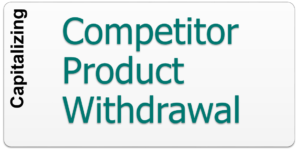At ASI, we believe that our value is best seen through the results that we achieve for our customers. These examples show the breadth and depth of ASI’s experience and skills in helping companies reach their business goals.
Click each case below to see the challenges with traditional analytics and the results with ASI in each situation.
 Driving Promotional Effectiveness
Driving Promotional Effectiveness
A large brand at a well-known pharmaceutical company was having difficulty determining what promotional tools were most effective for a given situation at a local market level. The home office analytics team had all the data but was slow to react to market changes, had trouble delivering personalized tactics to work in any given situation and couldn't measure return on marketing investment at anything other than the highest level.

 Market Access Challenges
Market Access Challenges
A mid-sized pharmaceutical company was struggling to manage payer performance. It was treading water at best. The company had identified several issues, including:
- Identification of relevant HCP’s associated with specific payers was painful
- Understanding payer opportunity when formulary changes occurred was nearly impossible
- Differences in quantifying an opportunity resulted in differences of opinion, leading to a lack of cooperation between the market access, sales and brand teams
- Inefficiencies in distributing highly personalized pull through lists to the field organization resulted in poor ROI
- Measuring pull through compliance and return on effort wasn’t easy
- Making on-the-fly course corrections virtually impossible
The team knew they had a problem and had tried multiple home grown and vendor solutions. All took too long to build, were disjointed, too expensive and ultimately didn't deliver what was promised.
 Market Access Challenges
Market Access Challenges
A mid-sized pharmaceutical company was struggling to manage payer performance. It was treading water at best. The company had identified several issues, including:
- Identification of relevant HCP’s associated with specific payers was painful
- Understanding payer opportunity when formulary changes occurred was nearly impossible
- Differences in quantifying an opportunity resulted in differences of opinion, leading to a lack of cooperation between the market access, sales and brand teams
- Inefficiencies in distributing highly personalized pull through lists to the field organization resulted in poor ROI
- Measuring pull through compliance and return on effort wasn’t easy
- Making on-the-fly course corrections virtually impossible
The team knew they had a problem and had tried multiple home grown and vendor solutions. All took too long to build, were disjointed, too expensive and ultimately didn't deliver what was promised.

 Competitor Withdraws. Now What?
Competitor Withdraws. Now What?
A major pharmaceutical company was presented with an unexpected opportunity when a competitor was forced to withdraw its product from the market. They needed to quickly capitalize on the situation, but:
- Who were the right customers based on the new market dynamics?
- How could this information be distributed to redirect its sales force?
 Competitor Withdraws. Now What?
Competitor Withdraws. Now What?
A major pharmaceutical company was presented with an unexpected opportunity when a competitor was forced to withdraw its product from the market. They needed to quickly capitalize on the situation, but:
- Who were the right customers based on the new market dynamics?
- How could this information be distributed to redirect its sales force?
 Competitor Withdraws. Now What?
Competitor Withdraws. Now What?
A major pharmaceutical company was presented with an unexpected opportunity when a competitor was forced to withdraw its product from the market. They needed to quickly capitalize on the situation, but:
- Who were the right customers based on the new market dynamics?
- How could this information be distributed to redirect its sales force?

 Co-promotion Commotion
Co-promotion Commotion
In many cases, joint ventures or co-promotes produce solid results for both companies, but often the parties involved have trouble reaching a common understanding on some basic elements.
A company with a small sales team had a relatively new, but very effective product in a significant therapeutic area, was partnering with a company which had substantial excess sales capacity with representatives who were well-trained in the targeted therapeutic area. However, things didn't go so well. The sales team experienced the following problems:
- Data silos within each company severely limited and prevented the joint team from critical business planning activities.
- Target customers were not consistent between the organizations
- There was no way to accurately measure joint promotional activity, nor its effect.
The two teams were getting very frustrated but didn't know whether they should (or could) continue working together.
 Co-promotion Commotion
Co-promotion Commotion
In many cases, joint ventures or co-promotes produce solid results for both companies, but often the parties involved have trouble reaching a common understanding on some basic elements.
A company with a small sales team had a relatively new, but very effective product in a significant therapeutic area, was partnering with a company which had substantial excess sales capacity with representatives who were well-trained in the targeted therapeutic area. However, things didn't go so well. The sales team experienced the following problems:
- Data silos within each company severely limited and prevented the joint team from critical business planning activities.
- Target customers were not consistent between the organizations
- There was no way to accurately measure joint promotional activity, nor its effect.
The two teams were getting very frustrated but didn't know whether they should (or could) continue working together.
 Co-promotion Commotion
Co-promotion Commotion
In many cases, joint ventures or co-promotes produce solid results for both companies, but often the parties involved have trouble reaching a common understanding on some basic elements.
A company with a small sales team had a relatively new, but very effective product in a significant therapeutic area, was partnering with a company which had substantial excess sales capacity with representatives who were well-trained in the targeted therapeutic area. However, things didn't go so well. The sales team experienced the following problems:
- Data silos within each company severely limited and prevented the joint team from critical business planning activities.
- Target customers were not consistent between the organizations
- There was no way to accurately measure joint promotional activity, nor its effect.
The two teams were getting very frustrated but didn't know whether they should (or could) continue working together.
 Co-promotion Commotion
Co-promotion Commotion
In many cases, joint ventures or co-promotes produce solid results for both companies, but often the parties involved have trouble reaching a common understanding on some basic elements.
A company with a small sales team had a relatively new, but very effective product in a significant therapeutic area, was partnering with a company which had substantial excess sales capacity with representatives who were well-trained in the targeted therapeutic area. However, things didn't go so well. The sales team experienced the following problems:
- Data silos within each company severely limited and prevented the joint team from critical business planning activities.
- Target customers were not consistent between the organizations
- There was no way to accurately measure joint promotional activity, nor its effect.
The two teams were getting very frustrated but didn't know whether they should (or could) continue working together.


